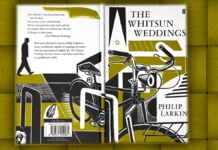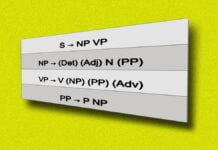- Step 1: Plan your blog post by choosing a topic, creating an outline, conducting research, and checking facts.
- Step 2: Craft a headline that is both informative and will capture readers’ attentions.
- Step 3: Write your post, either writing a draft in a single session or gradually word on parts of it.
- Step 4: Use images to enhance your post, improve its flow, add humour, and explain complex topics.
- Step 5: Edit your blog post. Make sure to avoid repetition, read your post aloud to check its flow, have someone else read it and provide feedback, keep sentences and paragraphs short, don’t be a perfectionist, don’t be afraid to cut out text or adapt your writing last minute.
Planning
The entire process of writing a blog post often takes more than a couple of hours. From the seed of the idea to finally hitting “Publish,” you might spend several days or maybe even a week “writing” a blog post, but it’s important to spend those vital hours planning your post and even thinking about your post before you write it.
Long before you sit down to put pen to paper, you need to make sure you have everything you need to sit down and write. Many new bloggers overlook the planning process, and while you might be able to get away with skipping the planning stage, doing your homework will save you time further down the road and help you develop good blogging habits. “No fun for the writer, no fun for the reader.” No matter what industry you’re working in, as a blogger, you should live and die by this statement.
Topic
Be sure to pick a topic that interests you. Nothing will kill a blog post more effectively than a lack of enthusiasm from the writer. Blogging is a lot easier, however, if you can muster at least a little enthusiasm for the topic at hand.
You also need to be able to accept that not every post is going to get your motor running. Some posts will feel like a chore, but if you have editorial control over what you write about, then choose topics you’d want to read – even if they relate to niche industries. The more excited you can be about your topic, the more excited your readers will be when they’re reading it.
Outline
Great blog posts don’t just happen. Even the best bloggers need a rough idea to keep them on track. This is where outlines come in. An outline doesn’t need to be lengthy, or even detailed – it’s just a rough guide to make sure you don’t ramble on and on about something tangential to your topic.
Outlines keep you honest. They stop you from indulging in poorly thought-out metaphors about driving and keep you focused on the overall structure of your post. Sometimes I’ll write a more thorough outline (and sometimes I won’t bother with one at all), but most of the time, something like the outline above is perfectly acceptable. Whether you write your outline in your word processor, on a piece of paper, or anything available, do whatever works for you to keep you focused.
Research
One of the biggest secrets professional bloggers don’t want others to know is that they don’t know everything. This doesn’t mean that all bloggers are insincere fakers. On the contrary, many bloggers’ natural curiosity is what makes them great at what they do. If you blog for a living, you have to be comfortable jumping from one topic to the next, even if you don’t know anything about it. What allows us to do this, and to write authoritatively about subject areas that are new to us, is knowing how to properly research a blog post.
It almost goes without saying, but relying solely on Wikipedia as a primary source is almost always a bad idea. Yes, Wikipedia does have thousands of excellently researched articles, but it’s not infallible, and erroneous facts do make their way into articles without site editors noticing.
If you’re relying on third-party information to write your blog post, choose authoritative sources. Official associations, government websites, heavily cited research papers, and pre-eminent industry experts are all good examples. Nobody is right all the time, though, so approach every source with a practised scepticism of a journalist and question everything until you’re positive your information is solid.
Check
If you fall prey to a well-executed hoax, repeat widely circulated misinformation, or simply make a mistake, own up to it right away and be transparent about your edits. If you try to slip something past your readers, you can bet that they’ll call you out on it, further compounding the damage. Be honest, be accountable, and fix it – fast.
Writing a Great Headline
There are two main approaches you can take to writing blog post headlines. You can either decide on your final headline before you write the rest of your post and use your headline to structure your outline, or you can write your blog post with a working title and see what fits when you’re done. The process behind the site’s headlines has merit, as it forces you to think about your post and how to grab your audience’s attention. Writing headlines for blog posts is as much an art as it is a science, and probably warrants its post.
The Writing Part
You can either sit down and write an entire draft in a single sitting, or you can chip away at it gradually over time. Getting as much done in one session as possible makes it easier to stay focused on the topic, and minimises the chance that you’ll forget crucial points.
Even if you work more effectively in short bursts, try to maximise the amount of writing you get done in those sessions. The more times you have to revisit a draft, the more tempting it is to add a little here, and a little there, and before you know it, you’ve gone wildly off-topic.
There are no “hacks” or shortcuts when it comes to writing. Like most skills, writing becomes easier and more natural the more you do it. When you first start, you might find that it takes longer to write a post, but with practice, you’ll be knocking out great posts in hours. A lot of people struggle with writing introductions. A great strategy is to write the introduction last.
Using Images
Writing for the web is entirely different from writing for print. Even a well-formatted blog post consisting solely of text is likely to make your reader run away. It’s so important to include images in your posts to break up the text. A well-chosen image can help lighten the tone of your posts. This can be particularly effective if you’re writing about a dry topic.
The Editing Part
Writing a blog post is hard. Editing a blog post is harder. Many people mistakenly assume that editing is simply striking through sentences that don’t work or fixing grammatical errors. Although sentence structure and grammar are both very important, editing is about seeing the piece as a whole and, sometimes, being willing to sacrifice words for the sake of cohesion.
Few things are more jarring to read than the repetition of certain words or phrases. Once you’re done with the first draft of your blog post, read through it and check for words that can be replaced to avoid repeating yourself.
Reading the post aloud to check the flow is a trick that many writers learn in workshops. If a piece reads awkwardly out loud, it will probably read awkwardly in your reader’s mind. Rework it until it rolls off your tongue. Having someone else reading work is crucial for inexperienced or casual bloggers.
Consider asking someone else to read your work. Also, be sure that they understand you’re not looking for help spotting typos or grammatical errors, but that you want to hear their thoughts on the flow of the piece and whether it makes sense structurally. If they do spot typos and grammatical errors, the better. Sentences should be as short as possible. They’re easier to read, making your audience’s job easier. Shorter sentences also reduce the likelihood of going off on tangents.
Paragraphs should also be short and sweet. The shorter the paragraph, the more likely your readers are to keep going. There’s no such thing as a perfect post, and the sooner you come to terms with this, the better. Make every post as good as it can be, learn from the experience, then move on.

Blogging is one of those jobs that seems easy until you have to do it. Fortunately, it does get easier, and with time and practice, you’ll be blogging like a professional in no time.





























